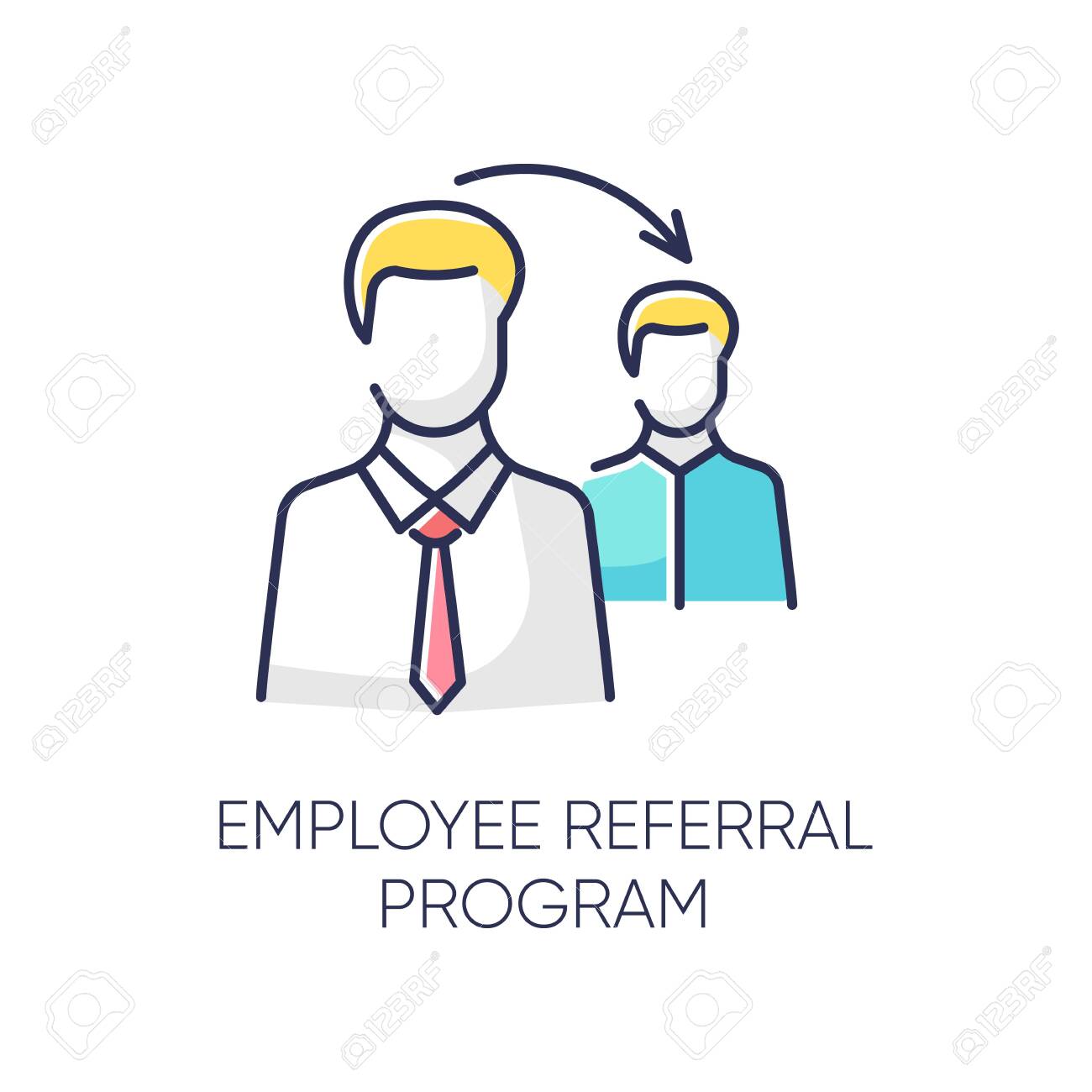How to develop an effective employee referral program
Published

Finding new employees can take a lot of time and effort. A possibility, Human resources The best way to save money and improve the quality of your new hires is to implement an employee referral program. Employee recommendations lead to applicants who perform better and stay with the company longer.
In this article, you'll learn more about how employee referral programs work, why employee referrals can be beneficial to your company, and how you can start an effective referral program yourself (with employee referral program ideas you can try).
What is an employee referral program?

Those : de.123rf.com
An employee referral program is a recruiting strategy that companies use to find qualified applicants. Typically, employers offer incentives to their current employees when they refer new employees for open positions - usually a friend, family member, or someone else in their network.
Employee referral programs can do wonders for a company looking to expand without placing unnecessary strain on recruiters and HR managers.
Benefits of an employee referral program

Those : aihr.com
When you use your own productive and talented employees to find additional workers, they tend to recommend people with the same characteristics. Additionally, a friend of a current employee is much more likely to fit into the company culture because the original employee is already such a good fit.
If you want to hire people quickly and save money, a referral program may be your best option. Employee referral programs increase sales by directing both new and existing employees to productive work motivate . Plus, you probably won't have to spend nearly as much money to find the candidate in the first place.
There are a number of other reasons why you should consider implementing an employee referral program as part of your hiring strategy, including:
The quality of the New hires will be improved: Current employees have unique skills to identify and recommend good candidates. You already know the mission, values, and culture of the company and who has the talent needed for the job. This makes it more likely that the candidates they recommend will fit well into the company and perform well.
Increases employee retention: Because referrals are often a better fit for the job and company culture, they are more likely to stay with a company longer. Not only that, but when an employee recommends a candidate for a position, they feel validated, especially if that person is hired. These factors help to drastically reduce the turnover rate.
You save time and money in the hiring process: Referrals speed up the hiring process and onboarding, saving resources. You will quickly receive information about potential Applicant , which reduces costs associated with job postings. Candidate selection is quicker, and recommended candidates are usually already familiar with the company and the hiring process, making their experience more enjoyable. By reducing time to hire, you spend less money on talent acquisition and improve the productivity of your hiring strategy.
Improves your company's reputation: A high percentage of job seekers spend a lot of time researching the company before applying for a job. If you have a good employee referral program, they will be happy to recommend your company to their network. This way you can attract the best talent for current and future open positions.
How employee referral programs work

Those : referralrock.com
A referral program motivates current employees to find potential new employees, usually through a referral bonus or reward. A referral bonus is a payment that employers give their employees as a gesture of appreciation when the person they recommend is hired and stays with the company for a certain period of time.
Of course, the cost of a referral bonus is only part of the cost of the program itself. You need to integrate the program into your company culture and introduce it in a way that motivates employees to use it. In addition, maintaining the program also incurs costs. Hopefully the benefits - such as increased revenue and lower costs per employee - outweigh the costs of the program.
How to create an employee referral program
Below are some ways you can create high-quality employee referral programs that work:
1. Get management on board
Before you can implement an internal employee referral program, you must obtain approval from senior management. Not only do you need to understand the value of these programs, but you also need to actively encourage your employees to participate. If they take the program seriously, the rest of the company will too.
Additionally, you can use senior leadership as a resource to set hiring goals and provide necessary resources for the referral program. However, executive approval is not enough if your budget does not cover the program. Therefore, it is important that you understand exactly how the program works within the boundaries of your company. Before you can approach management with inquiries, you should understand your hiring needs and the resources required.
2. Create a simple referral process
If you want your employees to do something extra (beyond their normal duties), like participate in a referral program, it needs to be straightforward and easy. Referral rules and rewards should be easy to understand and apply so that an employee doesn't feel like a referral means extra work. There are a few ways to make this process easy:
- Use an online employee referral tool
- Create a simple online form
- Place a resume mailbox in your human resources office.
- Create an email template that employees can use to recommend qualified candidates.
- Every time you advertise a new position, reschedule Recommendations via email to ask.
Another way to encourage referrals is to provide employees with company resources that make it easier for them to talk to potential recommenders. For example, a company introduction video or a careers page with employee testimonials and job details can be an effective way for employees to tell others how great it is to work at your company.
3. Set goals for the program
Even if your ultimate goal is to attract more qualified applicants for open positions, you should set some specific, measurable goals for a new employee placement program. The program should also be time-limited so that you know the time frame in which you need to achieve these goals. Some examples of goals you could set include:
- 25% more qualified applicants attract for vacancies
- Reducing time to hire by 10 days
- Reduced employee turnover by 50% in Q1
4. Offer a combination of incentives
Your employee referral program should offer some type of incentive, be it a financial incentive, a non-financial incentive, or a combination of both. For example, instead of a referral bonus, you could offer gifts or extra time off. Other ideas for employee referral programs include paid vacation, fun prizes (e.g. noise-cancelling headphones, dinner at a good restaurant in town), or a donation to a charity of the employee's choice. Some of these incentives are less costly than financial compensation, but can still be attractive to employees.
The best way to figure out what incentives to offer is to ask your employees what would motivate them most. Here are some other employee referral program ideas to consider:
- Organize competitions: Running referral contests between teams and awarding prizes can help generate enthusiasm and encourage teamwork. Recognize the best recommenders to improve employee job satisfaction and create a recommendation culture.
- Think about more than just money: Ask your employees what type of incentives would motivate them to refer candidates. The more excited they can be about a recommendation, the more likely they are to do it.
- Adapt the offer to the location: Do research about the region to tailor your referral program. Think of specific companies or services unique to your area that your employees would value.
If you decide to offer cash rewards for referrals, consider a tiered system. This could mean offering more money for positions that are harder to find candidates for. Another way to implement a tiered system is to pay a flat amount for each referral and then pay more money for each stage the candidate goes through during the hiring process. You could also offer compensation once the new employee reaches the six-month mark.
5. Announce the program and give instructions
The first thing you should do when launching a referral program is to make it known to everyone in the company. Publish your incentive structure and highlight the most sought-after rewards. Make sure you provide clear instructions so everyone knows how to make recommendations. Provide the instructions in a video, a downloadable PDF file, or on a web page on your company's internal website. It's also a good idea to post the information in areas where employees congregate, such as: B. in the break room so that the information is easily accessible.
Consider including details about your employee referral program in the new employee onboarding process.
6. Recognize employees for recommending candidates
When an employee recommends a candidate that you ultimately hire, recognize them for their impact on your company. Try to acknowledge them:
- Publication of the employee profile in the company newspaper
- Mention on the Social-Media - Company pages
- Announce their contribution on the company's internal website or communication channel
7. Integrate referral programs into your company culture
Your referral program shouldn’t feel like an additional element to your company. Instead, make it part of the company culture. While it should be part of the adoption process, it's also helpful to integrate it into other areas of your business. In this way, the program becomes a natural part of the company and not a recruiting tool designed to hire more employees and save money.
Here are some ways you can incorporate your referral program into your company culture:
- Host an official launch to generate excitement about the program. Host a party or announce the program at a company-wide meeting. Inform employees about the most important details and encourage them to participate.
- Drive employee engagement by promoting the referral program. Consider a few campaigns per year to promote the program internally. Come up with a catchy slogan and other marketing tactics to encourage employee engagement.
- Host quarterly happy hours for new employees. This can be a good way to get to know potential candidates in an informal setting. Have your employees invite their recommendations and serve food and drinks.
8. Measure the success of your referral program
To determine whether your program is working in your organization (or to identify areas for improvement), it's important to track your results. You should evaluate the recommendations based on quantity and quality. For example, think about:
- The total number of recommendations made
- The number of referrals that have been posted
- Whether you filled more positions through referrals or through other recruiting methods
- How long the candidates stayed with the company
- How Manager and employees think about the program








